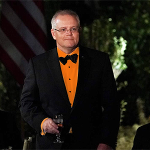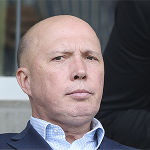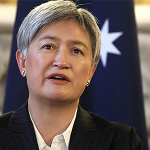When The Crow’s original film adaptation came out, I was a mean, moody teenager. Thus, this film has a particular place in my (dark) heart in many ways. Released in 1994 it was an unexpected hit at the box office, netting a cool $100 million. It also had a lasting cultural impact among its hordes of Gen X fans, a group that I just about fit into.
We were too young to see the birth of KISS, but its dark, eyeliner aesthetic resonated with the nascent goth and black metal scenes, and the tragic on-screen death of Brandon Lee only served to heighten the film’s eerie, ghoulish mystique. Lee was fantastic in the role of Eric Draven, the resurrected rock star out to get revenge on the gang that killed him and his lover.
The Crow was based on James O’Barr’s comic book series featuring the titular character of the same name. In the 1990s, comic-book movies were a bit of a mixed bag – for every Batman, there was a Teenage Mutant Hero Turtles. The Crow was different. Director Alex Proyas created one of the darkest visual sets I’ve seen outside of Sin City. Every scene is shot in low-key lighting, with storm-lashed scenes set against a backdrop of poetic narration. It was a dark and forbidding tale of violence, a southern Gothic story straight out of Edgar Allan Poe’s books.
Its cinematography, described by renowned film critic Roger Ebert as ‘a stunning work of visual style,’ contributed to its status as a cult classic. It spawned three further sequels, the last of which was released in 2005. This is the fifth instalment.
The soft reboot is one of the more intriguing concepts that has found its way into modern cinema. The concept, which has long been used in serialised storytelling, serves only one purpose. It happens when a franchise becomes too large, and writers want to update the style and tone while keeping some of the original series’ continuity. Some examples of soft reboots include 2015’s Mad Max: Fury Road and 1995’s Batman Forever.
However, I’d gladly trade the two hours I have just wasted watching this for either of those movies.
The remarkable thing about this version is that it has accomplished the impossible: it has trashed the source material, ruined the rich characterisation of its protagonist, and stripped the prestige, power, and magic from Proyas’ original version.
For example, the movie opens not with Eric Draven but with Shelly, his fiancee and source of his revenge motivation. Shelly, a drug addict, attracts the attention of a crime lord named Vincent Roeg after receiving an incriminating video from a friend. In order to hide, she ends up in a rehab clinic where she meets Eric, a weak, passive guy who is constantly bullied and beaten up by everyone. They escape after being recognised by one of Vincent’s henchmen.
The lovers are apprehended while seeking refuge in an abandoned home, and Vincent’s thugs kill them both only for Eric to be revived by a mysterious man named Kronos, who informs him that he must kill Vincent; apparently he made a Faustian pact to live forever, which Kronos dislikes. He tells Eric if he can kill him, he will reclaim his life and love. As long as his love for Shelly remains pure, he will be blessed with supernatural powers and immunity to death. So Eric decides to kill Vincent. The problem is he’s just as weak and pathetic as before. He quickly loses his special abilities, leading him to doubt his feelings for Shelly. When he returns to the afterlife, he makes a deal with Kronos: he will take Shelly’s place in hell if he is given another chance to kill Roeg.
On paper, Bill Skarsgård was the perfect choice for Eric. As Pennywise the clown, he’s previously played a crazed monster in make-up. But he’s awfully cast. As the titular character, Skarsgård spends most of the movie either crying, sulking, or following Shelly like a hormonal teenager. Not that it matters. He lacks chemistry with Shelly and appears out of place in a role that doesn’t know what to do with him. Why was he cast? I’ve no idea. Understanding that is a bit like asking whether a cat can understand the concept of Sweden.
Unlike the original, this one devotes an inordinate amount of time to the relationship between Eric and Shelly – in fact, she dies right at the start. Shelly appears only a few times in flashbacks – Eric’s love for her and unwavering desire for vengeance is what drives the story. She appears as a signifier for Eric’s tortured soul. It’s a powerful lesson in storytelling: show, don’t tell.
I can’t think of many remakes that have single-handedly missed the entire point of the original as much as this movie. Which begs the question: Why was this movie made? The Brandon Lee version was as good as a film of this style was ever going to be. If you are going to watch this, do yourself a favour and watch the 1994 version first. That one is a cult classic. This one has no soul.








